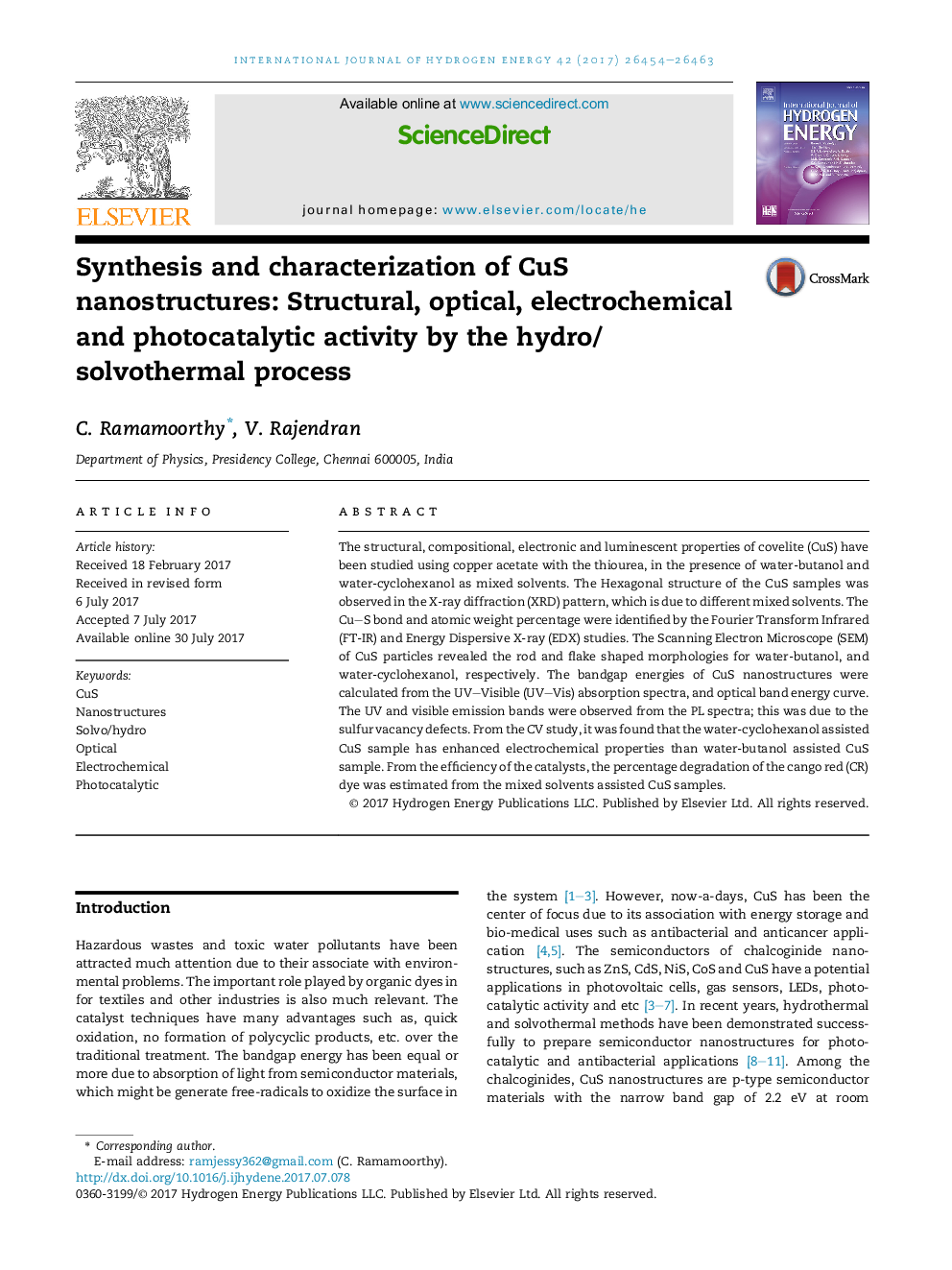| Article ID | Journal | Published Year | Pages | File Type |
|---|---|---|---|---|
| 5145080 | International Journal of Hydrogen Energy | 2017 | 10 Pages |
â¢In summary, CuS nanorods and nanoflakes were successfully synthesized by the solvothermal method.â¢The XRD pattern reveals the hexagonal structure of the CuS samples with high purity and crystallinity.â¢From CV result, super capacity behavior increased for the water-cyclohexanol mediated sample.â¢Hence, the water-cyclohexanol mediated sample has better and higher photocatalytic activity.
The structural, compositional, electronic and luminescent properties of covelite (CuS) have been studied using copper acetate with the thiourea, in the presence of water-butanol and water-cyclohexanol as mixed solvents. The Hexagonal structure of the CuS samples was observed in the X-ray diffraction (XRD) pattern, which is due to different mixed solvents. The CuS bond and atomic weight percentage were identified by the Fourier Transform Infrared (FT-IR) and Energy Dispersive X-ray (EDX) studies. The Scanning Electron Microscope (SEM) of CuS particles revealed the rod and flake shaped morphologies for water-butanol, and water-cyclohexanol, respectively. The bandgap energies of CuS nanostructures were calculated from the UV-Visible (UV-Vis) absorption spectra, and optical band energy curve. The UV and visible emission bands were observed from the PL spectra; this was due to the sulfur vacancy defects. From the CV study, it was found that the water-cyclohexanol assisted CuS sample has enhanced electrochemical properties than water-butanol assisted CuS sample. From the efficiency of the catalysts, the percentage degradation of the cango red (CR) dye was estimated from the mixed solvents assisted CuS samples.
Graphical abstractDownload high-res image (176KB)Download full-size image
